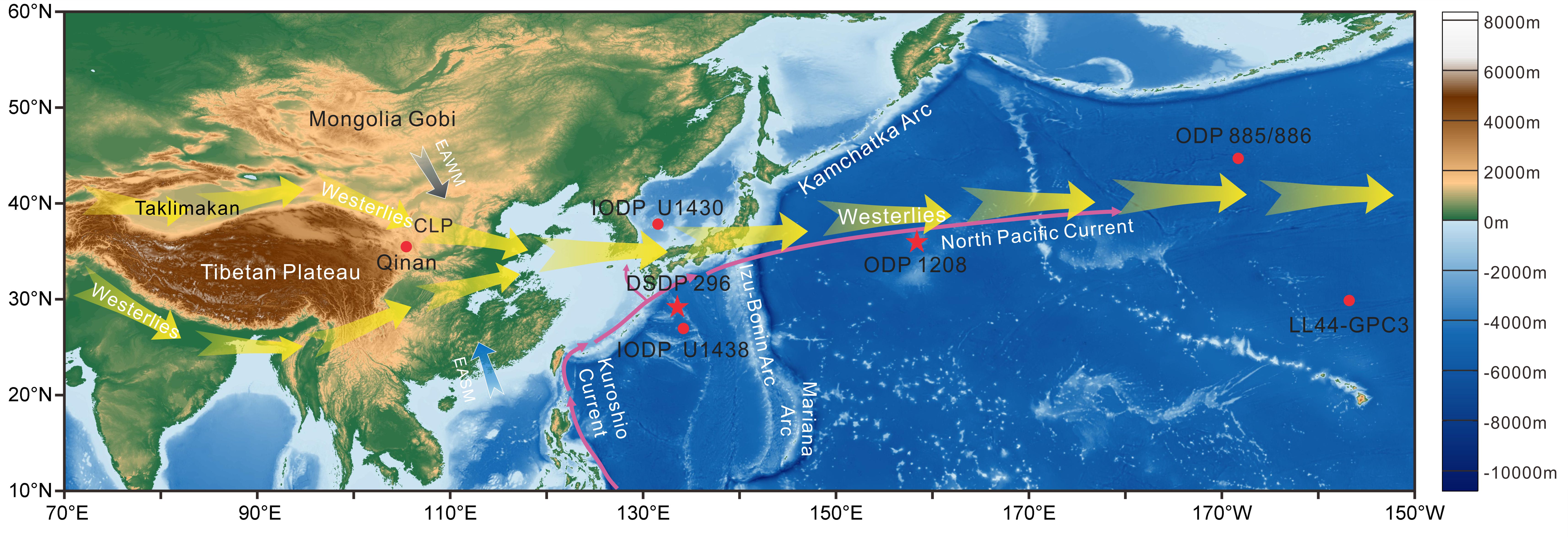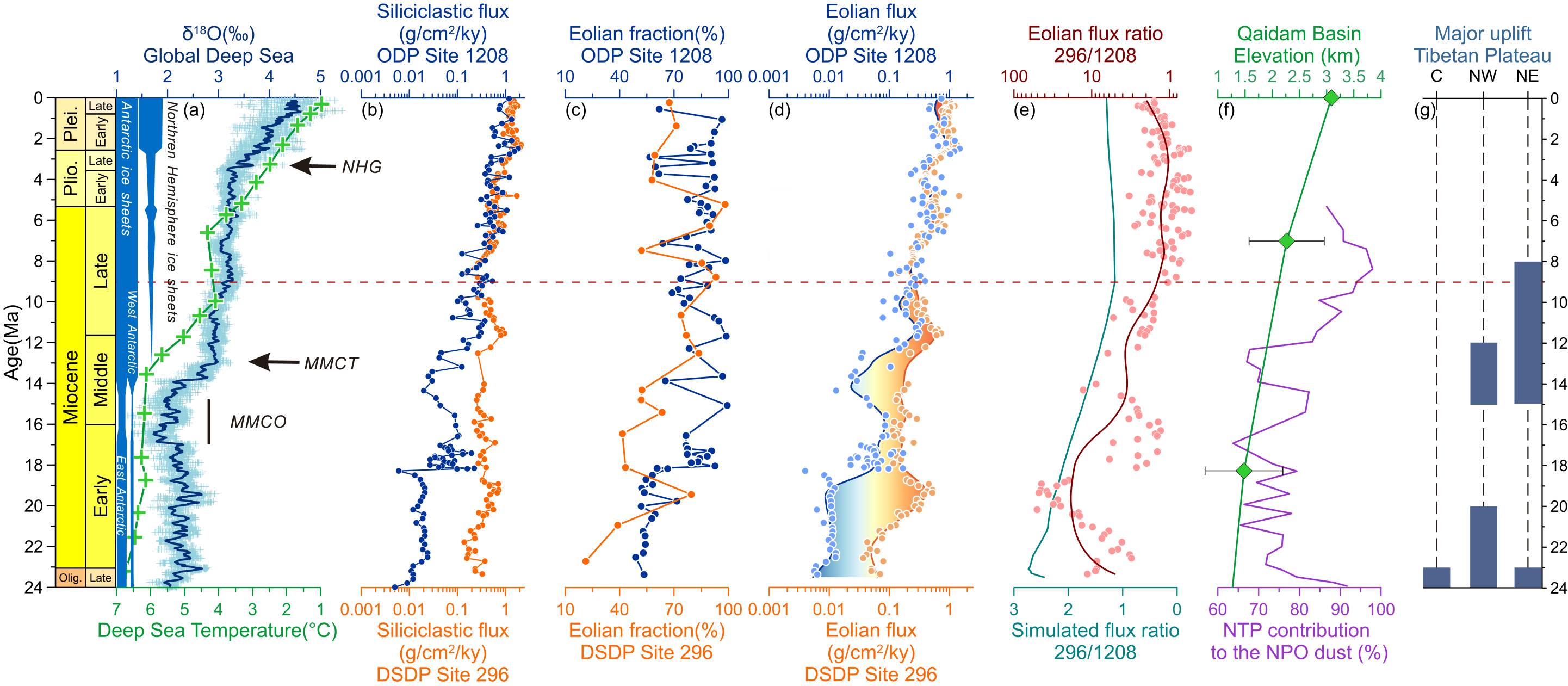The westerly wind is an important part of the global climate system, driving the mid-latitude surface currents, regulating the exchange of heat, water vapor, and carbon between the ocean and the atmosphere, and having an important impact on regional and global climate change. On seasonal to orbital timescales, the westerlies shifted poleward during warm periods and equatorward during cold periods in both hemispheres.
However, we still know little about how the westerlies shifted on tectonic timescales or whether large-scale topographic changes, especially the uplift of the Tibetan Plateau, have exerted a significant influence on the evolution of westerly circulation.
Recently, the research team led by Prof. WAN Shiming from the Institute of Oceanology of the Chinese Academy of Sciences (IOCAS) firstly reported the northward shift of the Northern Hemisphere westerlies in the early to late Miocene and its links to Tibetan uplift.
The study was published in Geophysical Research Letters on Sept. 16.
Researchers reconstructed long-term dust deposition records of the Northwest Pacific Ocean since ~23 Ma (Geological age unit) by investigating the Sr-Nd isotope composition and accumulation rate of the siliciclastic fraction of sediments from Deep Sea Drilling Project (DSDP) Site 296 in the Philippine Sea, combined with a matching eolian flux record at Ocean Drilling Program (ODP) Site 1208. Siliciclastic sediments at both sites were the product of two-member mixtures of volcanic materials from Northwest Pacific arcs and eolian dust from Asian deserts. The eolian dust was mainly transported from the Taklimakan Desert by the westerlies.
Furthermore, researchers found that the ratio of eolian fluxes at Site 296 to Site 1208 gradually decreased from about 10 at the early Miocene to 1 near 9 Ma and stayed at around 1 since then. After eliminating aridity and paleographic changes, the results showed that the Hemisphere westerly winds shifted northwards after 23 Ma from 30°N and reached a position similar to the modern one (~40°N) by ~9 Ma, after which they remained relatively stable on million-year timescales, which is supported by simulation results. Based on numerical simulations of the influence that Asian orogeny has had on the westerlies and the uplift history of the Tibetan Plateau, researchers argued that Tibetan uplift since at least the early Miocene had begun to drive the northwards shift of the Northern Hemispheric Westerlies until ~9 Ma.
"We reconstructed the long-term evolutionary history of the Northern Hemisphere westerlies since the early Miocene for the first time, which is important for understanding the tectonic-climate linkage between the evolution of the global climate system and Tibetan uplift," said Prof. WAN.
This work was supported by the National Natural Science Foundation of China, etc.

Fig. 1 Locations of geographic features and records used in this study

Fig. 2 Sediment provenance, backtrack path and eolian flux fluctuations of study sites in the west Pacific since the Miocene

Fig. 3 Evolution of eolian flux in the west Pacific and major uplifts in Tibetan plateau since the Miocene
(Text by WAN Shiming)
Media Contact:
ZHANG Yiyi
Institute of Oceanology
E-mail: zhangyiyi@qdio.ac.cn
(Editor: ZHANG Yiyi)

